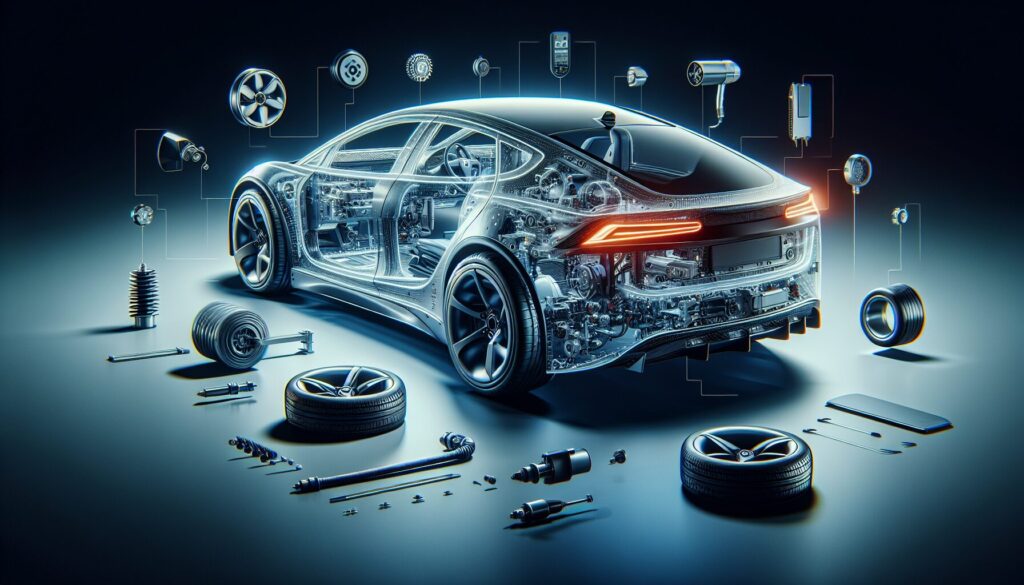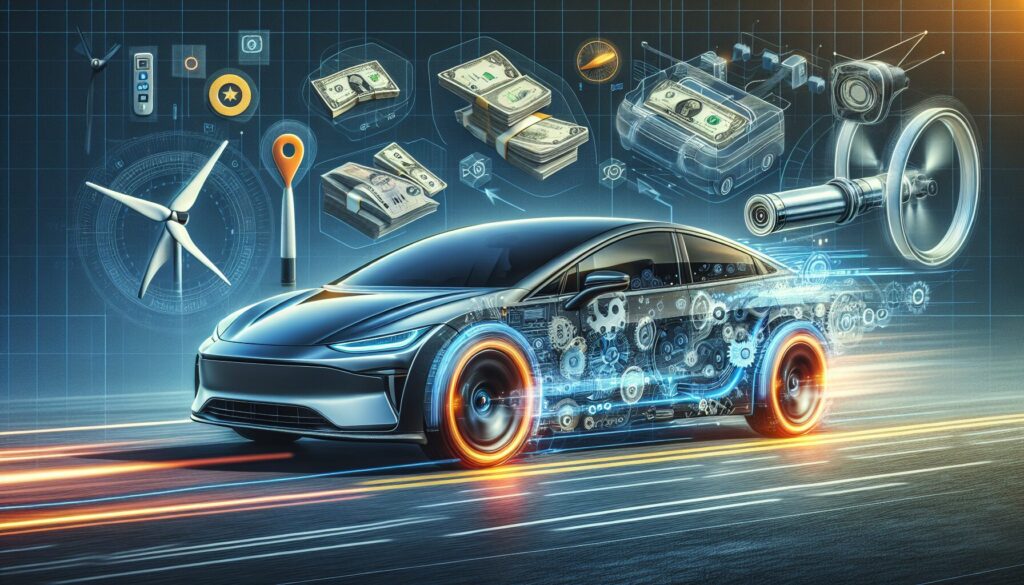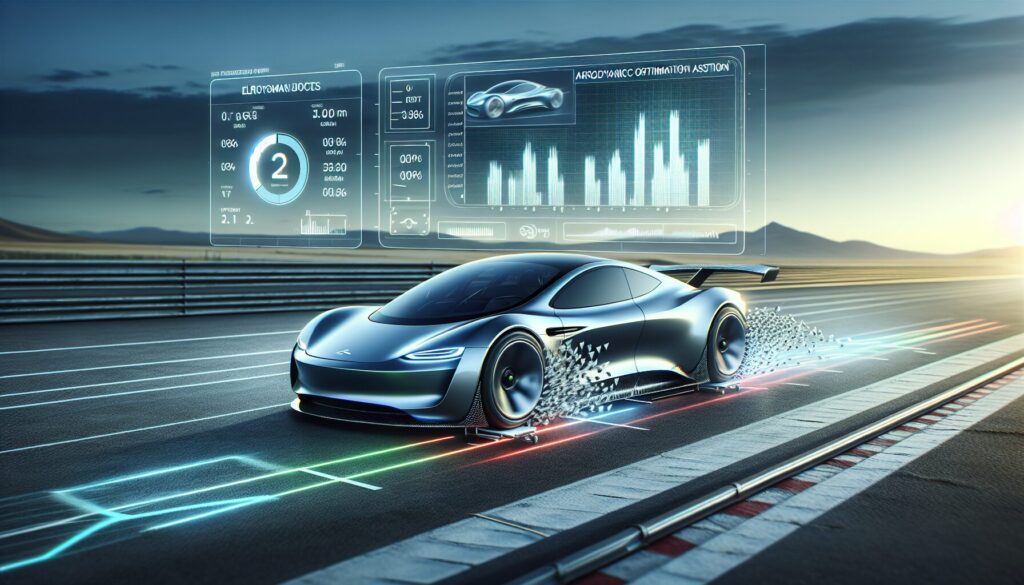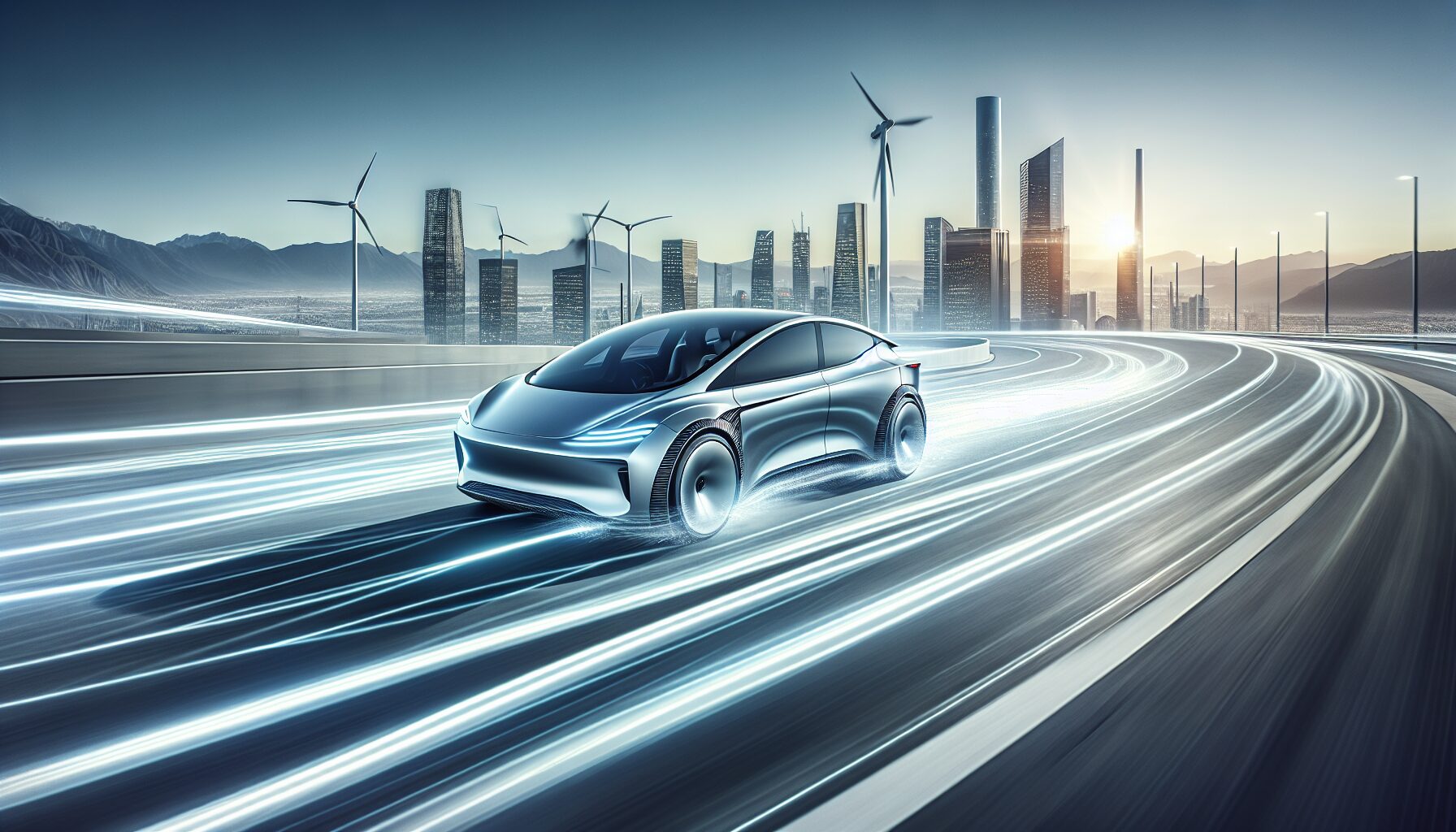Hey there, mate! So, let’s dive into the world of electric vehicle aerodynamics and why it’s such a big deal down under. Picture this: you’re cruising along the Great Ocean Road in your sleek electric car, feeling the wind in your hair. Wouldn’t it be awesome if your car could glide effortlessly, saving energy and extending your drive? That’s where understanding aerodynamics comes in. It’s all about how air flows around your vehicle, impacting everything from energy efficiency to how stable your ride feels at higher speeds. Imagine slicing through the air like a champion swimmer cutting through water. By optimizing this airflow, you’ll get more kilometers per charge and a quieter, smoother drive. Plus, it’ll make your car more stable when you hit the highway. Now, isn’t that a win for both your wallet and the planet?
Assessing Your Electric Vehicle’s Current Aerodynamics
When it comes to improving your electric vehicle’s performance, a good starting point is assessing its current aerodynamics. You might wonder how to get started without diving into complex engineering theories. Don’t worry—it’s easier than you think!
Simple Steps to Gauge Your EV’s Aerodynamics
First things first, take a close look at your vehicle’s exterior. Begin by checking for any obvious signs of drag, like roof racks or open windows. These can create resistance as you zip along the highway. If you often drive with items strapped to the roof, consider storing them inside the car instead. This small change can make a significant difference in your vehicle’s smoothness on the road.
Next, examine the wheel designs. Believe it or not, wheels play a huge role in your car’s aerodynamics. If your wheels have intricate designs or are wider than necessary, they might be causing unnecessary drag. Consider switching to more aerodynamic wheel covers to save on energy use.
Another quick check is your tire pressure. Under-inflated tires can increase friction, so make sure they’re filled to the recommended pressure. This not only improves aerodynamics but also enhances your car’s efficiency.
Tools and Techniques
For a more technical approach, you might want to try a smoke test. It’s a simple yet effective way to visualize air flow over your car. You can use a smoke pen or even a vape device. Move around the vehicle while it’s stationary and observe how the smoke travels. Areas where the smoke swirls or stalls are spots where air is not flowing smoothly. These are your targets for improvement.
If you’re keen on diving deeper, consider investing in a wind tunnel test. While this option is more professional, some car clubs and Australian National University offer accessible testing days for enthusiasts. It’s a fantastic way to get precise data on your car’s aerodynamics.
Finally, don’t forget to keep your EV clean. Dirt and grime can disrupt airflow, so a regular wash can surprisingly contribute to better aerodynamics. It’s a simple habit that rewards you with increased efficiency.
Applying these steps will help you optimize vehicle performance without needing a degree in engineering. Keep experimenting and see what works best for your specific model. Your electric vehicle will thank you with a smoother ride and better range!
Identifying Key Areas for Improvement

When it comes to enhancing your electric vehicle’s performance, focusing on aerodynamics can significantly improve your driving experience. Even minor tweaks can lead to substantial benefits. Let’s dive into some key areas where you can make a difference.
Streamlining Your Vehicle’s Shape
First and foremost, consider the shape of your car. A sleeker design means your vehicle slices through the air more efficiently. Think of it like cutting through water with a sharp knife versus a spoon. The sharper the edge, the less resistance. Look at modern electric vehicles by companies like Tesla for inspiration. They often feature smooth lines and rounded edges. If you’re considering an upgrade or modification, aim for a design that minimizes protrusions and sharp angles.
Optimizing Wheel Design
Wheels are another area where you can make significant improvements. Choose wheels that are designed for better airflow. Some brands offer aerodynamic wheel covers that reduce drag. It might seem small, but it can enhance your vehicle’s efficiency. Additionally, keeping your tires properly inflated not only increases safety but also improves aerodynamics. Under-inflated tires create more rolling resistance, which can reduce your driving range.
Reducing Wind Noise
Wind noise can be both an annoyance and an indicator of poor aerodynamics. You can reduce it by sealing gaps and cracks around doors and windows. Many car owners use weatherstripping kits to create a tighter seal, which not only makes for a quieter ride but also helps in creating a more streamlined vehicle. Consider investing in side mirrors with a more aerodynamic design or even cameras, as seen in some newer models.
Improving Battery Efficiency
Finally, a streamlined vehicle design can help maximize battery efficiency. By reducing air resistance, your car requires less energy to maintain speed, extending your driving range. This is crucial for those long trips along the Great Ocean Road. Every little improvement you make can lead to more kilometers before needing to recharge. Remember, it’s all about finding the balance between style and functionality.
In summary, these practical steps can enhance your electric vehicle’s aerodynamics, leading to a quieter, more efficient ride. By focusing on vehicle shape, wheel design, and reducing wind noise, you’ll be well on your way to optimizing your driving experience. Take inspiration from innovative designs at places like the Australian National University, where cutting-edge research often translates into real-world applications.
Implementing Practical Aerodynamic Enhancements

Optimizing your electric vehicle’s aerodynamics can feel like a daunting task, but with a few practical tweaks, you can enhance performance and efficiency. First off, let’s talk about wheel covers. Many EV owners overlook this, but installing wheel covers can make a noticeable difference. They reduce drag by smoothing airflow around the wheels, which means your vehicle cuts through the air more efficiently. It’s a simple change that can lead to better energy savings and longer drives.
Next, consider adding a rear spoiler. Now, I know what you’re thinking—spoilers are just for sporty looks, right? Well, not quite. A properly designed spoiler can reduce drag by directing airflow more effectively over your vehicle. This helps in stabilizing your EV at higher speeds, especially when you’re cruising down the highway on a weekend getaway along the Great Ocean Road. Just ensure it’s one that’s designed for efficiency, not just aesthetics.
Streamline the Undercarriage
The undercarriage of your vehicle is another area where you can make big gains. Adding an underbody cover can help in smoothing out the airflow beneath your car. This reduces turbulence, leading to a quieter and more efficient ride. It’s like giving your car a sleek, aerodynamic base so it can glide effortlessly. Plus, it doesn’t hurt that it also protects the underside from road debris.
Another tip is to keep your EV clean and waxed. It might sound trivial, but a clean surface allows air to flow more smoothly over your vehicle. Think of it like how a freshly polished surfboard glides through the water. Regular washing and waxing not only keep your car looking sharp but also help in maintaining its aerodynamic efficiency.
Finally, let’s not forget about tire pressure. Keeping your tires inflated to the recommended levels is crucial. Under-inflated tires increase rolling resistance, which means your EV has to work harder, consuming more energy. It’s a quick check you can do before any long drive, ensuring your vehicle is running as efficiently as possible.
By implementing these practical enhancements, you’re not just optimizing your vehicle; you’re also contributing to a more sustainable future. For more insights and guidance, you can always check out resources from experts like the Australian National University. Happy driving!
Monitoring and Testing Your Vehicle’s Performance

Monitoring your electric vehicle’s performance can feel like a fun science project. With a few practical steps, you can ensure your car is running smoothly and efficiently. First, let’s talk about how you can use the built-in systems in your vehicle to keep track of performance. Most electric cars come with a dashboard display that shows real-time data, like energy consumption and range. It’s like having a mini command center at your fingertips!
To get started, make checking these displays a habit. It’s a great way to stay informed about how your driving habits affect your vehicle’s efficiency. For instance, if you’re taking a scenic drive along the Great Ocean Road, you might notice how different driving speeds and styles can impact energy use. By keeping an eye on these metrics, you can start tweaking your driving to optimize for better aerodynamics and energy savings.
Tools and Tips for Testing Performance
In addition to the car’s built-in features, there are handy apps and gadgets you can use. Many electric vehicle brands, including Tesla, offer mobile apps that provide detailed insights into your car’s performance. These apps can show you charging history, energy usage trends, and even provide tips for improving efficiency. It’s like having a personal tech assistant in your pocket!
Moreover, consider investing in a tire pressure monitoring system. Proper tire maintenance can significantly improve your car’s aerodynamics and range. Under-inflated tires create more drag, which means your car has to work harder. Simply ensuring your tires are inflated to the recommended levels can make a noticeable difference.
For those who are keen on data, you might enjoy using a performance testing kit. These kits often come with sensors that can give you a deeper dive into your vehicle’s aerodynamics and overall performance. However, keep it simple and focus on the basics first. You’ll find that small changes can lead to big improvements over time.
Lastly, don’t forget the value of regular maintenance check-ups. Visit your local service center, like the ones at Australian National University, for routine inspections. These check-ups can catch any issues early, ensuring your car runs at its best. Keeping your electric vehicle in top shape not only enhances performance but also extends its lifespan, making every drive a joy on the open road.
Maximizing Efficiency with Regular Maintenance
Maximizing your electric vehicle’s (EV) efficiency isn’t just about sleek designs and futuristic tech. Regular maintenance plays a crucial role too! Imagine taking a leisurely drive along the Great Ocean Road. Your EV should glide smoothly, not struggle. Keeping up with maintenance ensures you’re getting the best performance.
Basic Maintenance Tips
Let’s dive into some practical steps you can take. First, keep an eye on your tire pressure. Under-inflated tires can increase drag, reducing efficiency. Invest in a good pressure gauge and check monthly. A little effort goes a long way!
Next, pay attention to your EV’s software. Manufacturers like Tesla often release updates that can improve aerodynamics and energy use. Make sure your vehicle’s software is up to date. It’s like giving your car a mini-upgrade without leaving your driveway.
Battery Care
Your battery is the heart of your EV. Protecting it ensures long-term performance. Avoid extreme temperatures by parking in shaded areas when possible. Charging habits matter too. Keep your charge level between 20% and 80% for optimal battery health.
If you’re taking a longer trip, plan your charging stops with apps recommended by the Australian National University. They offer guidance on the most efficient routes and charging stations.
Professional Check-Ups
Don’t forget regular check-ups with a professional. Mechanics familiar with EVs can spot issues you might miss. They’ll ensure everything from your brakes to your cooling system is working efficiently. This step is as crucial as any DIY maintenance you perform.
Beyond the technical, consider the cleanliness of your vehicle. A clean car reduces drag, optimizing aerodynamics further. Plus, it just feels good to ride in a sparkling clean car, right?
Lastly, remember that maintenance isn’t just about keeping things running. It’s about maximizing the joy of driving your EV. Whether you’re commuting to work or exploring new places, regular upkeep helps you get the most out of your vehicle. So, roll up your sleeves and give your EV the care it deserves!
Conclusion
To sum up, enhancing the aerodynamics of your electric vehicle is not only about sleek designs and advanced technology but also involves practical maintenance and mindful upgrades. By focusing on elements like wheel design, tire pressure, and regular check-ups, you can significantly improve your vehicle’s efficiency and driving experience. These efforts contribute to a smoother, more sustainable ride, ensuring every journey is as enjoyable as the last. So, keep your EV in top shape and enjoy the ride along the Great Ocean Road. Happy driving!
Continue Exploring
Ready to revolutionize your EV charging experience? Discover the top inductive charging systems tailored for New Zealand's needs and drive into the future with ease.
Frequently Asked Questions
How does optimizing aerodynamics impact the efficiency of electric vehicles?
Optimizing aerodynamics significantly impacts the efficiency of electric vehicles by reducing drag, which in turn decreases energy consumption. This optimization allows electric vehicles to travel longer distances on a single charge, enhancing their overall performance and range.
What are some common aerodynamic features used to enhance electric vehicle performance?
Common aerodynamic features used to enhance electric vehicle performance include streamlined body shapes, active grille shutters, underbody panels, and aerodynamic wheels. These features work together to minimize air resistance and improve the vehicle’s efficiency and stability.
Why is aerodynamic design crucial for electric vehicle manufacturers?
Aerodynamic design is crucial for electric vehicle manufacturers because it directly influences the vehicle’s range, energy efficiency, and overall performance. By prioritizing aerodynamic efficiency, manufacturers can produce vehicles that not only perform better but also provide a more sustainable and environmentally friendly transportation solution.


Leave a Reply